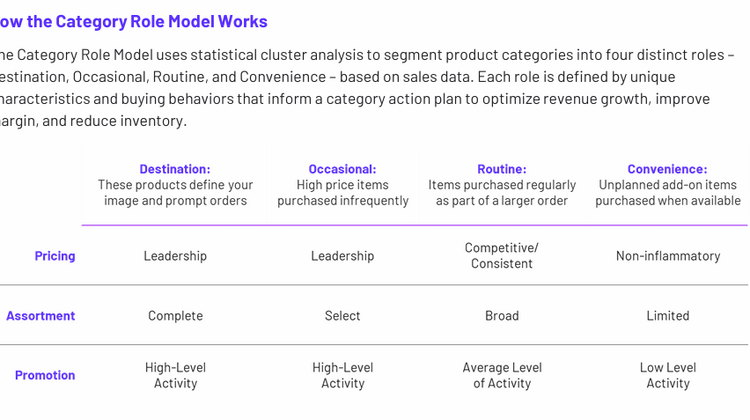
Recently, I was introduced to an Industrial Supply Association (ISA) member Precision that intrigued and piqued my curiosity. Their firm works closely on Category Management teams on programs and issues, and that got me thinking about that crucial side of the business in detail.
As a former Category Management leader for a few billion-dollar distributors that got my attention, as the term Category Management is used in the channel in many ways. In the HD Supply Companies, I was part of Category Management was the team that decided on the product set, pricing, inventory levels, backside rebates, and more.
In other teams I was on what we called – Supplier Relations or Vendor Management, and I have seen so many variations of the term and the responsibilities in the channel. For example – “Buy Side” and inventory breadth and depth may be handled by operations and purchasing. “Sell Side” pricing might be set by a pricing team that works closely with the buy side and category management team.
In my opinion, there is no one right way to structure the roles of Category Management teams or duties. There are a lot of ways to structure a team and assign responsibilities to be successful.
So, what is the one foundation for success for Category Management?
That answer is simply data and data management. I know that may sound like McKinsey consultant type speak, but let’s take that from 30,000 feet to a more tactical level in this column.
In reading through the material that Precision provided me to learn more they had a quote that jumped out to me
“The Category Role Model is a product segmentation technique…. this is built in partnership with the distributor utilizing actual sales transaction data and customer buying behavior. This approach provides an objective and data-driven understanding of each category’s function within the distributor’s portfolio to help optimize sales and gross margin.” Source Precision Data
So, lets dive into that more academic quote in detail. The foundation of all strong category management processes is customer buying behavior and sales transaction data. The intersections of those two key data points are where that distribution magic can happen.
So, lets start with a fictious scenario.
Let’s say your industrial distribution business is using a standard A,B,C,D and S inventory ranking system and you have a SKU that is scored a “C” across your entire company. Without overlaying customer data you are going to set your system min/max’s, safety stock, and system reorder levels at a “C” level.
That “C” SKU will have less depth of inventory and likely be limited in stock at a regional distribution center (RDC) or a parent branch (depending on your model). So, let’s say you have that C-level SKU in stock at your RDC at 8 units which is a next day ship to the end customers that will buy the SKU.
That seems reasonable and safe….It’s what you were taught in Distribution Inventory Management 101 class. But….you sell that SKU almost exclusively to one key customer who for their business this “C” SKU in your system is a crucial “A” SKU for them, that they need their Distributor to have available “next day” as safety stock.
So that top customer calls you and needs 12 units next-day and you have in stock at your RDC?
Where does that order go? (to the competition likely).
How does the customer feel about your service? (they don’t have it and I am one of their best customers)…..you can see where this example leads…
If you have the intersection of sales transaction data and customer buying behavior set up properly you could likely adjust that SKU to an “A” level SKU for that key customer at the appropriate RDC, you could protect that inventory for that customer at that RDC, your salesperson could use that knowledge to sit down with the customer to discuss solutions, etc…..
The two intersections of data and the ability to access that data quickly and efficiently without building pivot tables and access databases yourself is crucial to success, in my opinion.
The days of “gut feel” experience associates making good decisions without foundation data are diminishing…more and more of your seasoned associates with 30 years of experience are retiring every day. The way to help mitigate the brain drain we are all facing is with data and processes.
Stay tuned as we will be sharing a webinar we are doing with Precision for ISA Members in July where we will dive into more practical examples on Category Management Tactics that can help your distribution business.
I would love to hear your thoughts and comments. As always, we appreciate your support. jgunderson@channelmkt.com


Leave a Reply